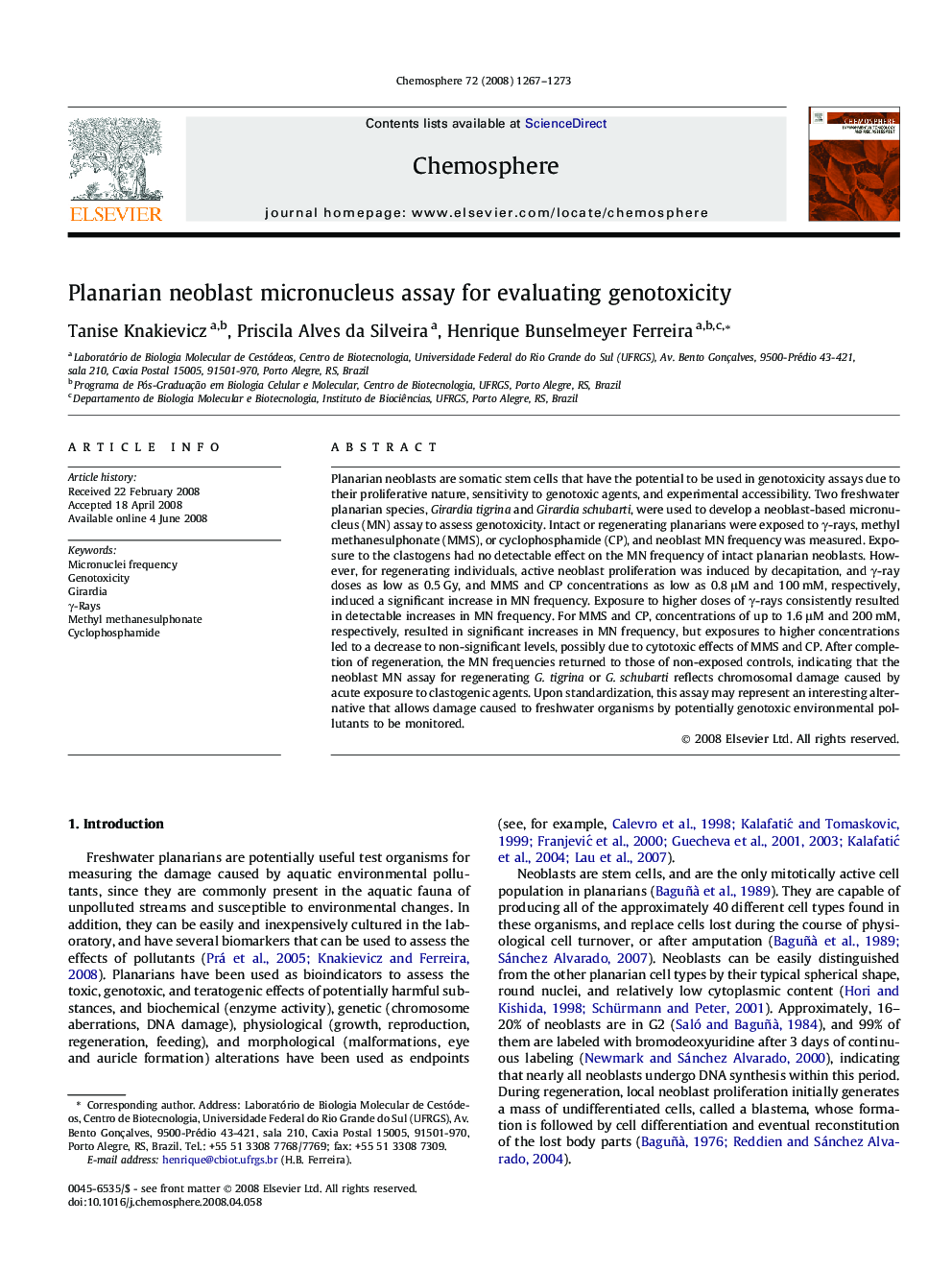| Article ID | Journal | Published Year | Pages | File Type |
|---|---|---|---|---|
| 4413598 | Chemosphere | 2008 | 7 Pages |
Planarian neoblasts are somatic stem cells that have the potential to be used in genotoxicity assays due to their proliferative nature, sensitivity to genotoxic agents, and experimental accessibility. Two freshwater planarian species, Girardia tigrina and Girardia schubarti, were used to develop a neoblast-based micronucleus (MN) assay to assess genotoxicity. Intact or regenerating planarians were exposed to γ-rays, methyl methanesulphonate (MMS), or cyclophosphamide (CP), and neoblast MN frequency was measured. Exposure to the clastogens had no detectable effect on the MN frequency of intact planarian neoblasts. However, for regenerating individuals, active neoblast proliferation was induced by decapitation, and γ-ray doses as low as 0.5 Gy, and MMS and CP concentrations as low as 0.8 μM and 100 mM, respectively, induced a significant increase in MN frequency. Exposure to higher doses of γ-rays consistently resulted in detectable increases in MN frequency. For MMS and CP, concentrations of up to 1.6 μM and 200 mM, respectively, resulted in significant increases in MN frequency, but exposures to higher concentrations led to a decrease to non-significant levels, possibly due to cytotoxic effects of MMS and CP. After completion of regeneration, the MN frequencies returned to those of non-exposed controls, indicating that the neoblast MN assay for regenerating G. tigrina or G. schubarti reflects chromosomal damage caused by acute exposure to clastogenic agents. Upon standardization, this assay may represent an interesting alternative that allows damage caused to freshwater organisms by potentially genotoxic environmental pollutants to be monitored.
